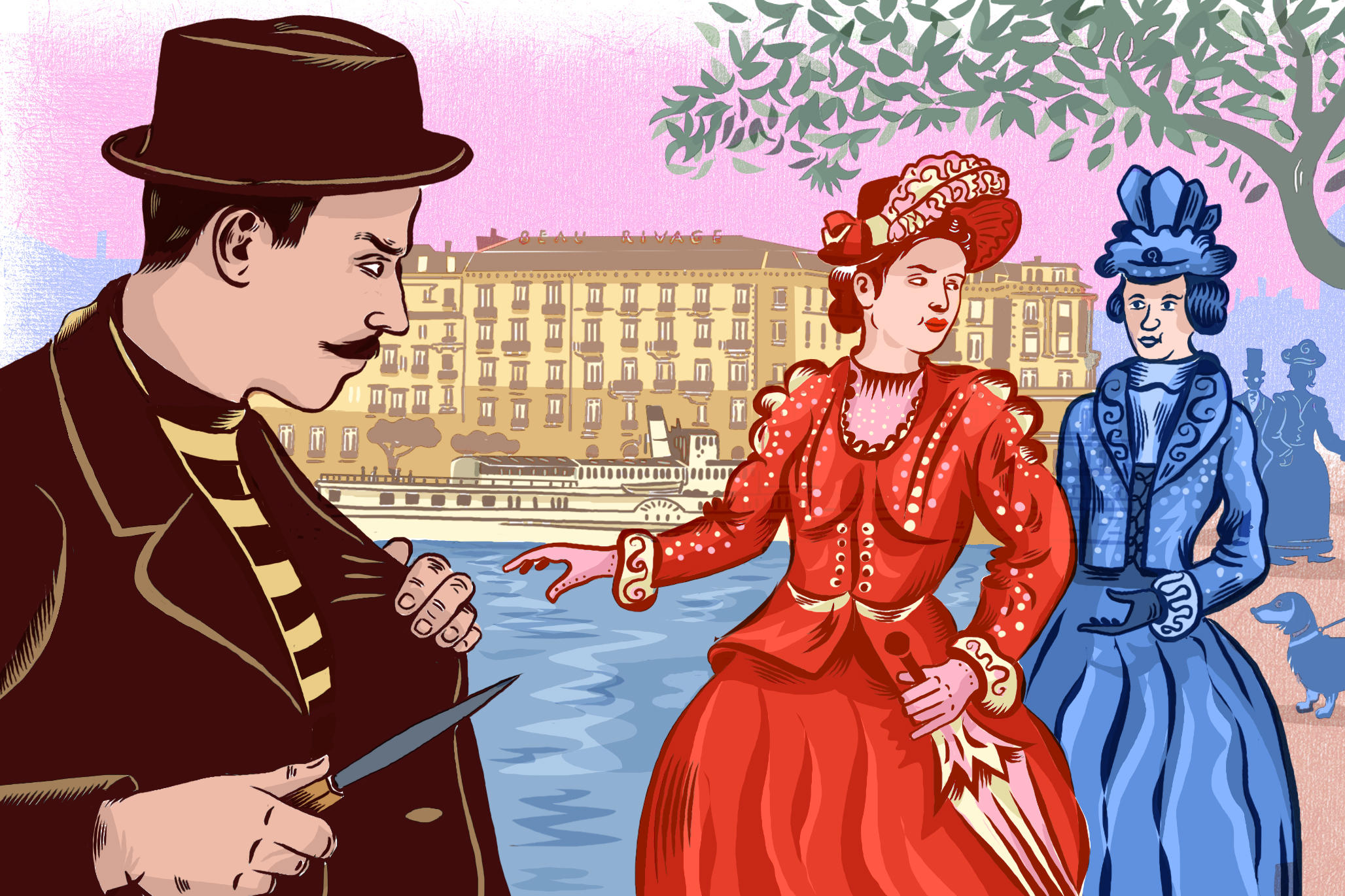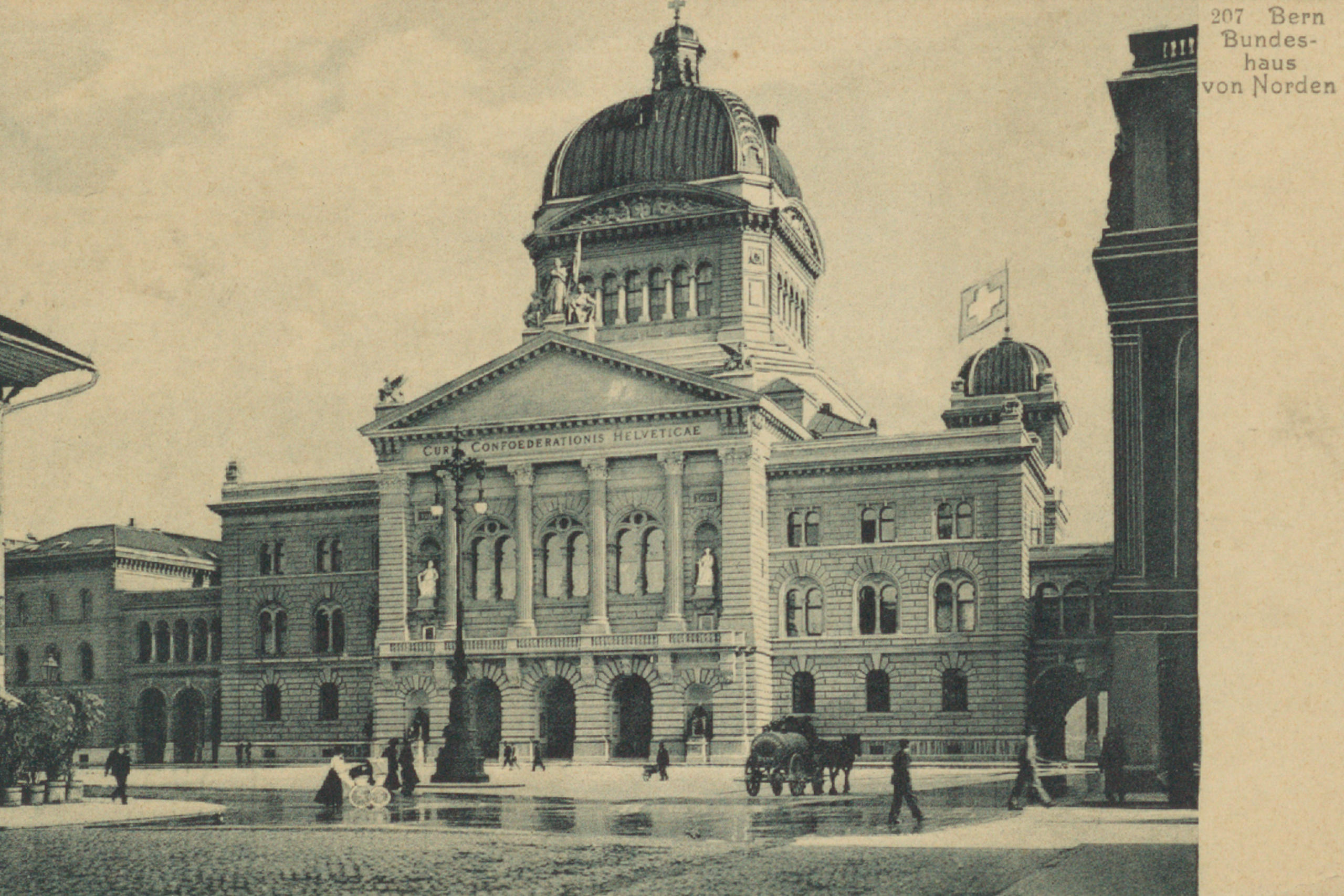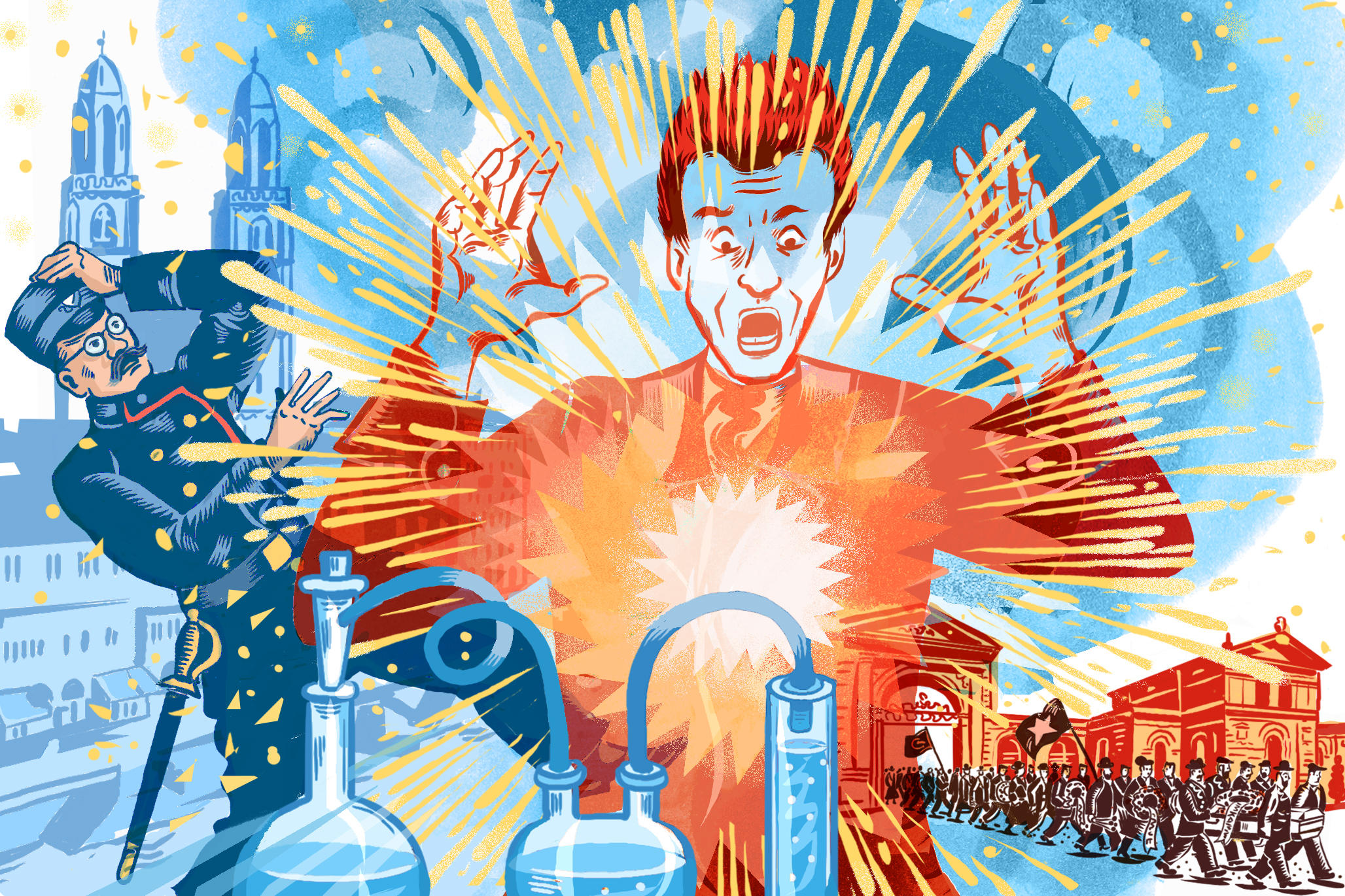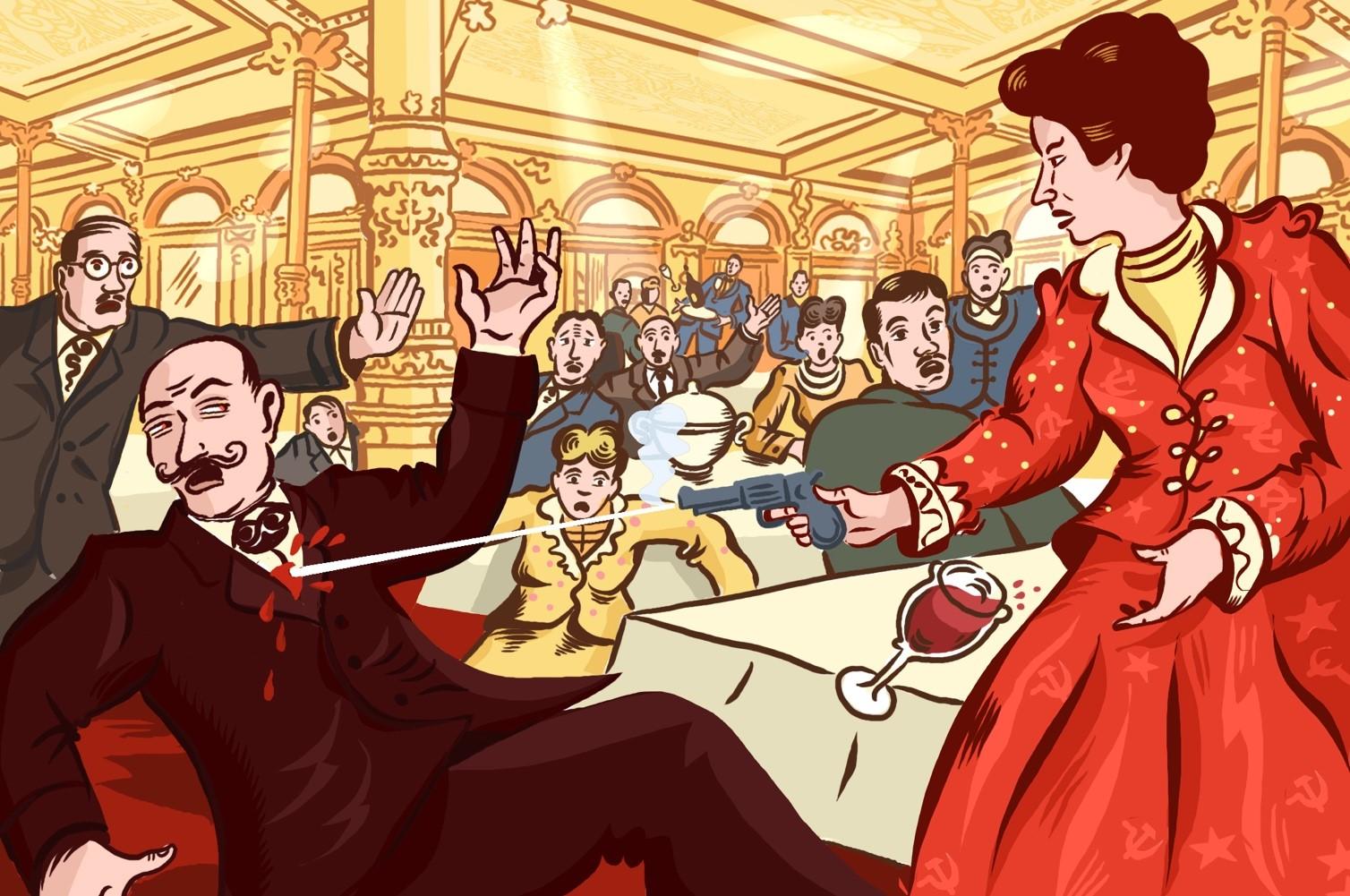
The turbulent history of anarchists in Switzerland
A look back at Swiss history shows that politically motivated crimes were more frequent in the past than we might think. However, the terror factor of these actions was a lot worse than the damage caused.
In September 1898, Elizabeth, Empress of Austria and Queen of Hungary, affectionately known as Sissi, went for a stroll along the quay in Geneva with her lady-in-waiting. Suddenly, a stranger rushed towards her and rammed a nail file straight into her heart. She only felt a slight stab, but fainted and died a few hours later.

More
‘Empress stabbed in the heart’
Her murder is considered the first political attack in modern Swiss history. Her killer, the Italian Luigi Luccheni, was a committed anarchist – one of many who had sought refuge in Switzerland around this time, since the country had granted political asylum to those who had fought against Europe’s monarchies after the failed revolutions of 1848. Switzerland was an important refuge for anarchists, if not the birthplace of the notion of anarchism.

More
The forgotten history of the libertarian Left
However, the struggle did not always stop at the border. In the 1880s, the Swiss government came into the spotlight when an anarchist threatened to blow up the parliament building.

More
Did terrorists once plot to blow up the Swiss government?
Almost 100 years later, this plan inspired the singer songwriter Mani Matter for his song “Dynamite”, later covered by the band Züri West.
Numerous anarchists in Switzerland saw themselves as committed to the “Propaganda of the Deed” and used assassination as a modus operandum. “We don’t have money to stir up the masses. For this reason, we are forced to commit blatant acts that serve the same purpose,” Russian anarchist Isaak Dembo explained during an interrogation. He was suspected of making bombs in the labs of the Swiss Federal Institute of Technology in Zurich.

More
The bombers of Zurich: how two Russians shaped Swiss history
Several anarchist trials attracted international attention, such as that of Tatjana Leontieff. She accidentally executed a French businessman when she mistook him for the Russian interior minister in a grand hotel in Interlaken in 1906. A jury of locals did not acquit her, but did issue a lenient sentence on the grounds of insanity.

More
Murder at the Grand Hotel: a deadly mix-up
The last straw, however, was a bank robbery during which anarchists shot dead a young cashier in Montreux in 1907. The robbers were nearly lynched after their arrest, and the mob demanded the death penalty.

More
How a Montreux bank heist led to calls for the death penalty
This crime wave repeatedly triggered calls for Switzerland’s asylum laws to be tightened. One response to the crimes committed by anarchists was what became known as the ‘Anarchists Law’ of 1894, which made building bombs a criminal offence.
However, the basic message remained: the ‘notion of freedom in Europe’ must not be abandoned by Switzerland, wrote the Neue Zürcher Zeitung newspaper:
“You may chase desperate people from country to country, but one day they may get the chance [to build a bomb] and will take advantage of it as much as possible,” the paper said.
“The thought of not being safe in the glory of our civilisation may be humiliating; however, it is a fact and we should acknowledge it.”

In compliance with the JTI standards
More: SWI swissinfo.ch certified by the Journalism Trust Initiative







